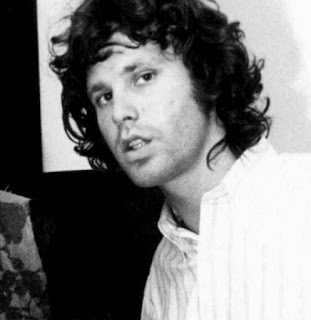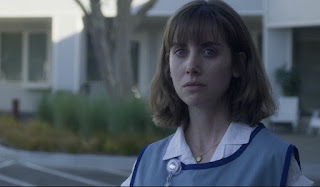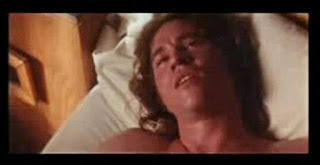Psychiatrist Oleguer Plana-Ripoll knew that many individuals have multiple conditions — anxiety, depression, schizophrenia and bipolar disorder. He wanted to know how common it was to have more than one diagnosis, so he got his hands on a database containing the medical details of around 5.9 million Danish citizens. He was taken aback by what he found. Every single mental disorder predisposed the patient to every other mental disorder — no matter how distinct the symptoms. “We knew that comorbidity was important, but we didn’t expect to find associations for all pairs,” says Plana-Ripoll, who is based at Aarhus University in Denmark. The study tackles a fundamental question that has bothered researchers for more than a century. What are the roots of mental illness?Scientists have found evidence that many of the same genes underlie seemingly distinct disorders, such as schizophrenia and autism, and that changes in the brain’s decision-making systems could be involved in many conditions. Researchers are also drastically rethinking theories of how our brains go wrong. Perhaps there are several dimensions of mental illness — so, depending on how a person scores on each dimension, they might be more prone to some disorders than to others. The most immediate challenge is working out how to diagnose people. Since the 1950s, psychiatrists have used an exhaustive volume called the Diagnostic and Statistical Manual of Mental Disorders, currently in its fifth edition. It lists all the recognized disorders, from autism and obsessive–compulsive disorder to depression, anxiety and schizophrenia. Each is defined by symptoms. The inherent assumption is that each disorder is distinct, and arises for different reasons. However, even before the DSM-5 was published in 2013, many researchers argued that this approach was flawed.
Few patients fit into each neat set of criteria. Instead, people often have a mix of symptoms from different disorders. Even if someone has a fairly clear diagnosis of depression, they often have symptoms of another disorder such as anxiety. “If you have one disorder, you’re much more likely to have another,” says Ted Satterthwaite, a neuropsychiatrist at the University of Pennsylvania in Philadelphia. Psychiatrists have tried to solve this by splitting disorders into ever-finer subtypes. “If you look at the way the DSM has evolved over time, the book gets thicker and thicker,” says Satterthwaite. But the problem persists — the subtypes are still a poor reflection of the clusters of symptoms that many patients have. As a result, the world’s largest funder of mental-health science, the US National Institute of Mental Health, changed the way it funded research. Beginning in 2011, it began demanding more studies of the biological basis of disorders, instead of their symptoms, under a programme called the Research Domain Criteria. In 2019, the World Health Assembly endorsed the latest International Classification of Diseases (called ICD-11), in which some psychopathologies were newly broken down using dimensional symptoms rather than categories. The challenge for the dimensionality hypothesis is obvious: how many dimensions are there, and what are they? Satterthwaite calls this “a very large problem”. Ultimately, a future version of the DSM could have chapters devoted to each dimension. A 2009 study found that thousands of gene variants were risk factors for schizophrenia. Many were also associated with bipolar disorder, suggesting that some genes contribute to both disorders.
One study of six psychopathologies found that the brain’s grey matter shrank in three regions involved in processing emotions: the dorsal anterior cingulate, right insula and left insula. But subsequent studies by Adrienne Romer, a clinical psychologist now at Harvard Medical School and McLean Hospital in Belmont, Massachusetts, identified a totally different trio of regions with roles that include the pons, cerebellum and part of the cortex. One key to making sense of this might be to focus on the brain’s executive function: the ability to regulate behaviour by planning, paying attention and resisting temptation, which relies on many brain regions. Romer and Satterthwaite have independently found disruptions in executive function in a range of psychopathologies — the suspicion being that these disruptions could underlie the p factor. Suicide is one of the most observed symptoms in DID and suicide rates reported as 70 - 72% in DID and presence of a dissociative disorder was the strongest predictor of a suicidal behavior. DID is highly associated with consequent risk of recurrent suicidal behavior. Self harm, labile emotion, and impulsivity suggest the diagnosis of comorbid borderline personality disorder. Evidences show that Borderline personality disorder (BPD) and DD have often been reported to occur comorbidly. BPD diagnosed in 30% to 70% of DID patients. “I think it’s a time for much more empirical research rather than grand theorization,” says Neale. At the genetic level at least, he says, there are many disorders, such as PTSD and generalized anxiety disorder, that remain poorly understood. Source: www.nature.com
Alan R. Graham: I believe Jim Morrison was descending deep into depression and alcoholic schizophrenia. Frustrated by the mediocrity of his fans, Morrison distanced himself from thems. In his last interview before he left for Paris, Jim had told a reporter, “One morning, I woke up and was surrounded by all of these spirits.”
Jeff Finn: Subtlety, in the form of fine-detail gray-scale shading, is in order if we are to fully empathize with Jim Morrison's wounded core. When You're Strange briefly broaches the reality of its title: feeling like a stranger, or an outcast. It's been noted elsewhere that Jim Morrison knew that pain, which hit at a young age, so it begs the question: why didn't DiCillo wade further into that particular mire, in order to extract the actual motivations that drove a volatile artist to raging alcoholism, depression, and early burnout, all in a pre-rehab world? It's convenient to now view Jim Morrison merely as a popular icon/cultural oddity and forget that, in the end, the psychic pain that came with feeling like an outsider was what ultimately secured his psychedelic place in the rock pantheon. When I met with Alain Ronay, whom Oliver Stone had hired as a consultant for his Doors film, he told me he marched up to Stone, and asked him why he wasn't telling the truth about Jim. According to Ronay, Stone smiled and said, "Because the truth doesn't sell."
Patricia Butler: I had no opinions formed about Jim and Pamela when I started out my research. I didn't have many opinions formed. That's why it was easier for me to dismiss the oft-repeated theories when actual facts proved those theories to be wrong. I talked to Dr. Arnold Derwin, The Doors' occasional physician. At the time Jim left for Paris, Derwin hadn't seen him professionally for over a year. In truth, Jim was in bad health when he left the States. Ray Manzarek remarked on his horrible cough. Jim filled a prescription for asthma medication just before he left the States. There is difference between what people believe and what they say in public. I know from personal experience that Ray Manzarek, for instance, said many things in public which, in private conversation, he'd laugh about. Manzarek actually confirmed that Jim's asthma was giving him real problems before he left the States. Danny Sugerman, too, would write things for public consumption because it was good for the Doors's mystique, not because he believed those things to be true. Despite later revisionist claims, Sugerman was not even friendly with Jim at the time. So asking what certain people believe is not the same as asking what what they'll say "on the record." When I spoke to Alain Ronay regarding that interview he did for that Italian magazine, his exact words to me -- and I remember them very well, because he actually cried -- "How could you believe I would say such terrible things about Jim and Pam? I loved them both so much." He swore to me that he had been grossly misquoted and his statements completely misrepresented. Now I don't know whether that was true or not. I can easily see Alain saying sensational things in order to sell a big story to a magazine, and then crying over it when he got called on the carpet for it. I also talked with the Morrisons, who confirmed Jim suffered from asthma since he was a child. Until the 1990s, Jim's parents never visited his tomb in Paris and later Pamela's sanctuary. I was really angry with Stephen Davis when he called me. When he did tell me what he was planning for his book, I found it completely disgusting, not to mention entirely irresponsible. But Davis didn't care. What do you think sells more books -- the truth or the scandal? I recommend Frank Lisciandro's book as one of the few reliable books. Frank told me Paul Ferrara had refused to be interviewed for Friends Gathered Together because Ferrara 'didn't have a good recall of Morrison.' More than that, I think, Morrison had not a good recall of Ferrara, given his flirtation with Pamela.
Virginia Flagg: I did not deal with Jim in public but there are witnesses of our friendship, albeit a bit perplexed that I visited his house. He goofed on never explaining my privileges or purpose in his life. Other than that, our relationship was very reclusive. I spent a lot of time at his house in Laurel Canyon, and Pam knew it. Pam came to trust me, and I had lovely times with her as well. Pam was bright, beautiful, charming, and funny. I never went to a Doors concert but sometimes I hung out with Jim in the afternoon during setup, or after a concert. Once I gave him acid tied to a flower before the Hollywood Bowl concert, as I lived up the hill, and he asked me to come by--but there was a form of wisdom that I gained early on, by not getting in the line that would assign me to groupiedom and would have made lose my objectivity. I only slept with Jim once. Believe me, if you had ever slept with him, you would not forget it--it was an infectious state you found yourself. Pamela was Jim's true love, she was his little girl, and the woman he chose. In that era the artistic scene in Los Angeles was a relatively small community, compared with what it birthed later. About the influence of Warhol/Nico on Jim, I don't think the Factory's scene mixed that well, being Jim straight. My grandfather was James Montgomery Flagg who collaborated in the creation of the "I Want You" poster when FDR asked for a more sobering image for Uncle Sam. John Barrymore and my grandfather were bohemian friends. In the 60s I worked serving drinks in the booths of "The Brave New World" (the coolest underground club, even moreso than Bido Lito's). One night, amidst Arthur Lee and Frank Zappa and the Mothers--suddenly sauntered a rebel dressed in nondescript jeans and a tattered shirt, and I was struck by the sheer weight of his authority onstage. My heart was swollen, it was truly stupefying. Jim was way ahead of the times in his consciousness of what was coming. I was an acquaintance of Janis Joplin and Jim Morrison though Jim referred to me as a friend. We exchanged poetry and he liked my poems. I never idolized Jim Morrison. He was a man of considerable inner strength and personal integrity but his faults were many, with a tendency to self-pity and evasiveness, and I dealt with those faults as well as I could. Source: groups.alt.music
"If you watch the footage of Jim speaking with Pastor Fred Stegmeyer you see more of the real Jim. He was very cordial and, at heart, a true southern gentleman." -Robby Krieger. It’s refreshing to see him sober and enjoying a conversation in this segment of The Doors: Feast of Friends (1970) documentary directed by Frank Lisciandro. The mystique of Jim Morrison kind of fogs the true side of what he was like. It was really nice to see this side of Jim. He listened, he was respectful and gave intelligent answers to the pastor.







































































